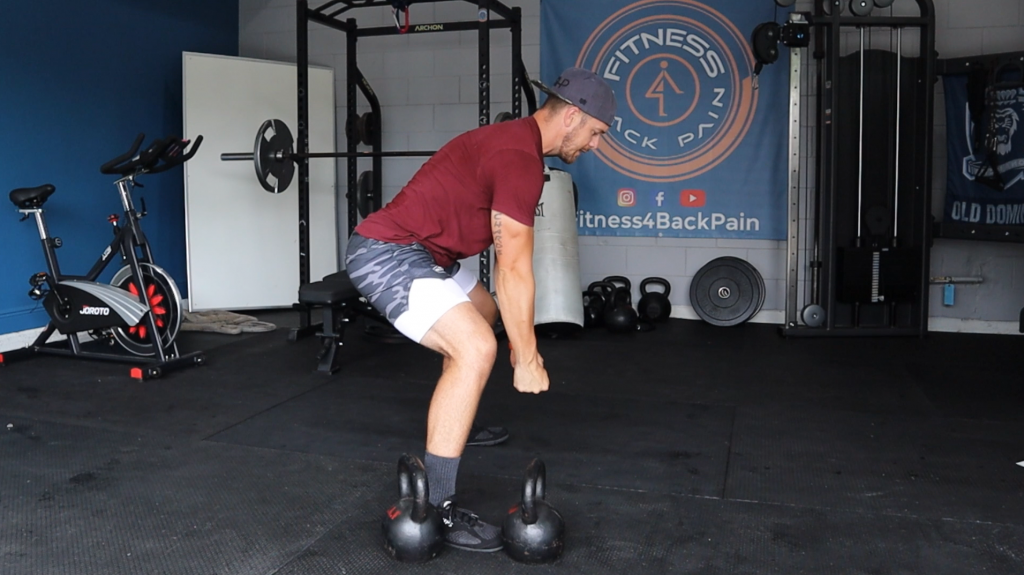FIX Back Pain With Flexion | Use these 2 exercises!
Are you scared to lift your little one off the ground, grab that bag of mulch out of the garage, or lift that suitcase into the overhead compartment?
If you answered YES to any of those, today’s video is for you!
Bending over is an essential movement our bodies should be able to do. Even more importantly, we need to be able to do this pain-free, or it’s just going to create more problems down the road.
In today’s video, I’ll share with you two simple movements you can use to begin working back toward pain-free bending.
Today you’ll learn:
2 simple exercises to help eliminate the tension and fear around bending
How to train your brain to let go of your back to bring relaxed, pain-free bending
Why your back keeps getting tight, achy, and giving you those pinching feelings every time you bend (it’s not your disc injury)
and more!
Why Does Your Back Hurt When Bending Over?

Imagine your back as a complex structure made up of bones, muscles, ligaments, and discs, all working together to support your body.
When you bend forward, whether to tie your shoes, pick something up, or just to stretch, a few things can happen that might lead to back pain:
Muscle Strain:
One common reason for back pain during forward bending is muscle strain.
There are a lot of factors to muscle strain, but in the world of chronic back pain, you’re dealing with both a subconscious desire to protect your back and a conscious desire to be abe to bend and lift things you need.
Your brain is trying to protect you while you are trying to go about your day. This constant bending against the deep desire to protect, guard, and stiffen can create a world of pain and tension in the lower back that sticks around.
Disc Pressure:
Your spine is made up of bones called vertebrae, and in between them are cushion-like discs.
When you bend forward, the discs in your lower back get compressed.
If you have a history of low back tension, disc herniation, or bulge, and the repeated flexion causes the herniation to create pressure on the sciatic nerve, this can create a host of issues downstream from that site, often leading to sciatica and other referred pain.
Now, these are only two reasons, but in my world, a combination of these two typically brings out the pain people experience when bending over.
Against that’s not everyone, but a majority of those I talk to.
I'm Scared To Bend Over, What Should I Do?

The fear of bending, often referred to as “kinesiophobia,” can contribute to back pain in several ways.
It may not directly cause physical pain, but it can lead to avoidance behaviors and muscle tension, which can exacerbate or trigger existing back issues.
Here’s how the fear of bending can contribute to back pain:
Muscle Tension:
When someone is afraid of bending due to fear of pain or injury, they may unconsciously tense their back and surrounding muscles.
This muscle tension can lead to discomfort and pain, as constant muscle contraction can strain the back muscles and increase the likelihood of muscle spasms.
Avoidance of Movement:
The fear of bending can cause individuals to avoid activities that involve bending forward, such as picking up objects from the floor, tying shoelaces, or even sitting down.
Avoiding these movements can lead to deconditioning of the back and core muscles, making the back more susceptible to pain.
Limited Range of Motion:
Fear can lead to stiffness in the back.
Over time, this limited range of motion can result in decreased flexibility and weakened muscles, which can increase the risk of back pain and reduce the spine’s ability to absorb shock and stress.
Psychological Stress:
Constant worry about bending and the potential for pain can lead to stress and anxiety.
Stress can contribute to muscle tension, which, in turn, can lead to back pain.
Moreover, psychological stress can exacerbate the perception of pain, making it feel more intense than it actually is.
Negative Cycle:
The fear-pain cycle can be self-reinforcing.
The fear of bending can lead to avoidance behaviors, which weaken the muscles and create more vulnerability to pain.
When pain eventually occurs due to muscle weakness and tension, it can reinforce the fear, creating a cycle that is challenging to break.

